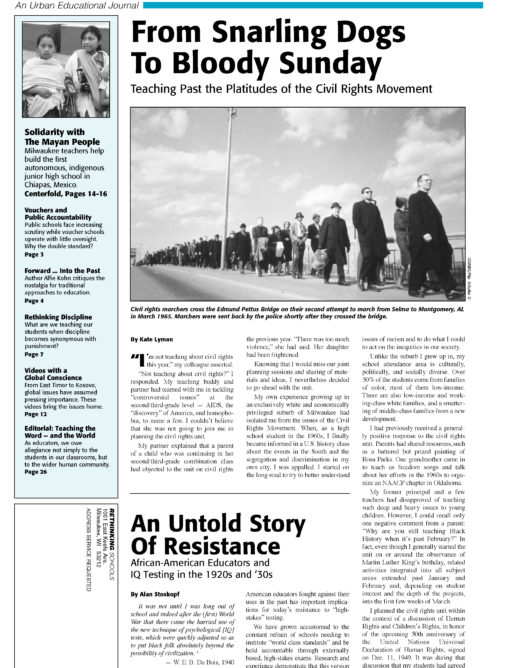Preview of Article:
Rethinking Discipline
What are we teaching our students when discipline policies are reduced to punitive measures grounded in coercion, control, and compliance?
“Here we go again, talking about who will guard the prisoners. “With that, my colleague Karl Holmquist shook his shaggy head, slammed his grade book on the table, and stormed out of our team meeting.
For two months, we had devoted our middle school team meetings to issues of discipline. We’d even been summoned to a half dozen “emergency” meetings, called mid-week, after school, or during our team’s prep hour, to continue the discussions. It seemed we weren’t going to talk about anything else, and our frustrations were growing.
“It’s out of control up there,” the principal at our K-8 school complained, pointing a plum-colored, manicured fingernail to the ceiling and implicating the third floor which housed our middle school program.”I don’t care what you do, but you’d better do something about it.”
I’ve taught seventh and eighth grade social studies for eight years in three different middle schools: one rural, one suburban, and, presently,one inner-city. Regardless of the setting, it seems that we adults spend an inordinate amount of time, money, and energy dealing with discipline.</p

